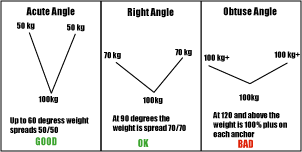Well I have seen a few post over on UKC, a major source of inspiration for this and my other blog, so if you do have a question on coaching or rope trickery then get in contact. The debate was whether using a snapgate is safe or not. Now as an instructor I often advise people starting out to use screwgates, as having it lock makes them feel a lot safer. However as you move through your climbing career you might stop carrying 27 screwgates on you rack, instead just taking one HMS a couple of extras quickdraws you can steal the snapgates off.
However with the new phantom screwgate, the old weight argument for not using screwgates is a little redundant, however I often choose not to use them, just because I feel happy. in one of the UKC thread John Arran wrote these wise words:
“You only really need to use screwgates when there is no redundancy, so for example if you have 3 good pieces then snaplinks are completely fine on each, but if you bring them all together with slings to a single clipping point then that should rightfully have a screwgate on it. Alternatively 2 snaplinks with opposing gates works a treat.”
To me as an active instructor in North Wales, I see far more worrying things than using screwgates. The main one is not weighting the belay, meaning that there is the potential for shock load. Now I weight the belay, as it allows me to lean back, and almost sit on the anchors in my harness. Now even with snapgates there is virtually no chance of the rope coming out of the carabiner if I am weighting the belay. It also allows me to see if any of the carabiner gates are compromise by rock, potentially open the gate and reducing the breaking strain, it is those that I try to use screwgates or back to back snapgates on.
Most important for the belay is that it conforms to several underlining and essential principles. In that each anchor is INDEPENDENT of the others, that the anchors are place to take load in the right DIRECTION, that the anchors are EQUALISED, and that the ANGLES are under 90 degrees, not forgetting that the anchors are SOLID. This gives the acronym:
IDEAS






